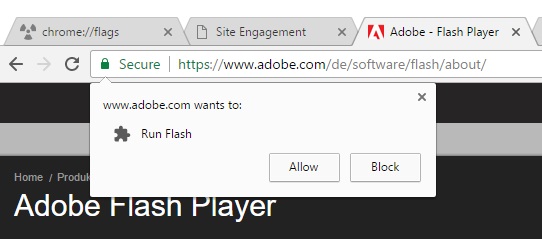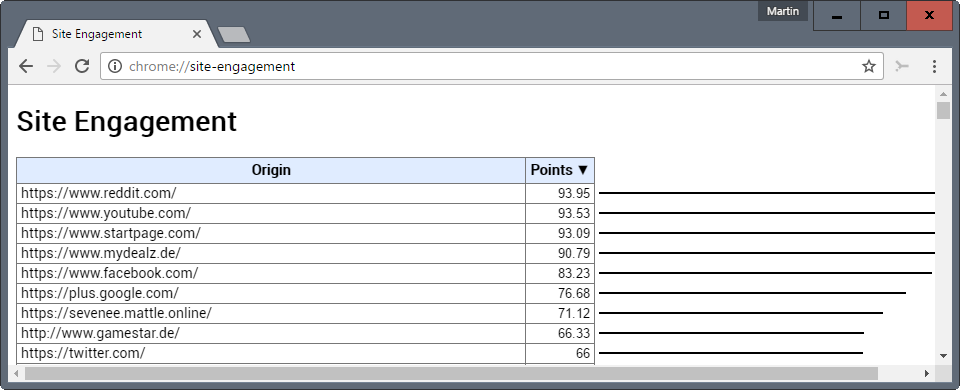Google Chrome HTML5 Roll-out plan
Google revealed yesterday how it plans to make the shift to prioritizing HTML5 over Flash in the company's Chrome browser.
The company announced previously that it will deprioritize Flash content on the web in favor of HTML5 content.
The decision left many questions unanswered: will Chrome block all Flash content eventually? What is the time frame for the change? What happens to sites that only support Flash but not HTML5?
This article will answer all those questions and a couple more.
Google Chrome HTML5 Roll-out plan

The roll out runs from January 2017 to October 2017 if things go as planned. Chrome uses the site engagement metric to determine whether "activate Flash" prompts are displayed to the user on sites that don't support HTML5 fallbacks.
Site engagement describes how often a site is accessed by a Chrome user. The value gets higher with visits, and starts at 0 for sites that have not been visited yet.
Tip: You can display the site engagement values for all visited sites in Chrome by loading Google chrome://site-engagement in the address bar. Points can be edited for any site. This can be useful for testing purposes, but also to raise the score of a site above a certain threshold.

Chrome will display a Flash prompt for any site visited in the browser that falls below a selected threshold for the given month.
In January 2017, any site below 1% will throw a prompt to activate Flash. This goes up to a threshold of 32 in June 2017, and to 100 in October 2017.
Only new sites will display prompts in the beginning, but this will change over the course of the year 2017 until all sites will prompt the user for activation.
January 2017 is special, as only 1% of all stable users of Chrome will join the Flash deprioritizing group. Google plans to increase the value to 100% with the release of Chrome 56 Stable in February 2017.
Testing
Developers may test the functionality in Chrome Beta. To do so, load chrome://flags/#prefer-html-over-flash in the browser and set the flag to enabled. Restart the browser to complete the change.
This enables the HTML5 over Flash functionality in the browser with a fixed site engagement rating of 30.
Any site below that threshold will prompt to enable Flash, any site above it won't.
Closing Words
Flash will remain a part of Google Chrome for the foreseeable future but users will face more and more prompts when they want to run Flash in the browser. The change is of concern to website operators as well who use Flash exclusively or predominantly on their sites as part of Chrome's user base will probably exit the site instead of following the prompt to enable Flash.
Mozilla plans to drop NPAPI plugin support in Firefox 53 which will be out April 18th, 2017 (Google did so in Chrome 45 already, but Flash is not NPAPI but PPAPI in Chrome so it did not affect the technology).
Flash will likely be the only exception to the rule as plans are underway to whitelist Flash so that it remains available.
Now You: Do you visit sites that rely on Flash?
This article was first seen on ComTek's "TekBits" Technology News

- Log in to post comments